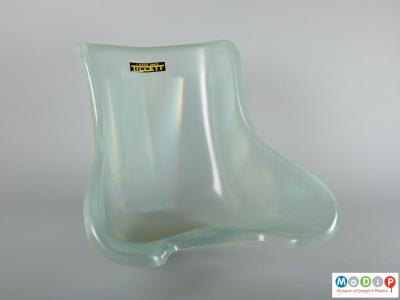Process: A sheet of fibres, glass or carbon for example, is placed into a two-part mould, which is then clamped closed. The closed mould is injected with thermosetting resin under low, positive hydraulic pressure. The mould will often have vents at the furthest points to allow air to escape.
Introduced: In 1976, Osborne Industries, Inc., originated and initiated the closed-mould process that was later known in the plastics industry as resin transfer moulding, or RTM.
Plastics: Carbon fibre composite and glass-reinforced plastics. The plastics materials that can be reinforced in this way include polyester, phenolic, and polymethyl methacrylate.
Marks: A rough spot shows the injection gate where the sprue is removed. See Injection moulding.
Tooling cost: High.
Production volume: Medium.
Uses: The reinforced material can provide a complex structure that is both light in weight and high in strength. It is used for furniture, automotive and aeronautical applications, as well as sports equipment and casings for power tools.

